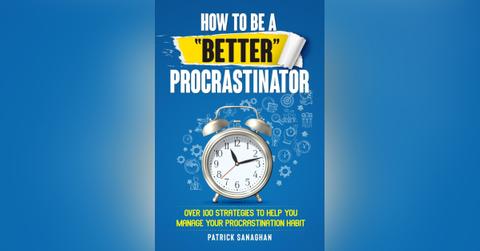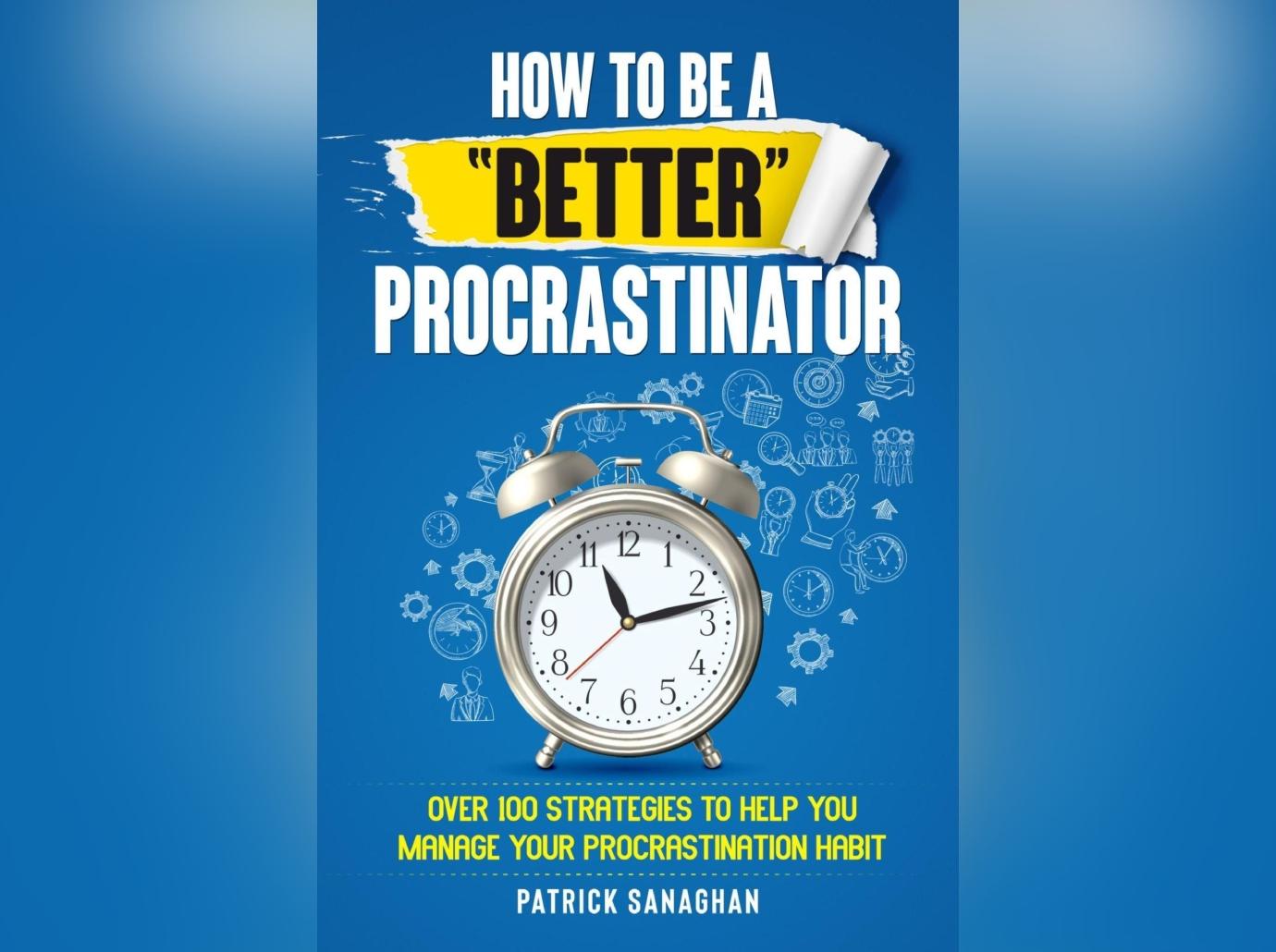 NEWS
NEWSHow to Be a Better Procrastinator: 101 Strategies on How to Help a 'Waiter' Become a 'Doer'

Aug. 25 2024, Published 4:00 p.m. ET
From one procrastinator to another, How To Be A Better Procrastinator by Dr. Patrick Sanaghan transforms the stereotypes and negative connotations of procrastination into tangible takeaways and effective solutions that ignite productivity. Created as an answer to a global rise of procrastination, the book is a treasure trove of insights, strategies, and relatable anecdotes that help ‘waiters’ become ‘doers.’

Empirical evidence shows that everyone procrastinates about something. However, research highlights that a staggering 20% of the US population are chronic procrastinators. For that 20%, putting difficult, tedious, or complex tasks in the back of their minds isn’t a rare moment of luxury but a way of life. Whether when filing income taxes, completing a dissertation, cleaning a house, or responding to a long text from weeks before, chronic procrastinators will always find ways - some more sophisticated than others - to keep playing the waiting game.
Sanaghan, a seasoned consultant and serial entrepreneur with a kaleidoscope of professional accolades addresses the needs of one-fifth of the population in How To Be A Better Procrastinator, a unique guide to transforming stagnation into action. For him, that motivation is personal; a self-proclaimed procrastinator, Sanaghan realized his tendencies to delay and stall while completing his dissertation.
He recalls, “I realized my issue about 20 years ago. I was supposed to be writing my doctorate thesis. But instead of writing it, I kept reading, and reading, and reading… I was perusing every single word and sentence, constantly flipping the pages, and reading more books and resources to improve my research. At first, I thought I was just trying to do a good job and be thorough. But it was just a very sophisticated form of procrastination.”
Want OK! each day? Sign up here!
With a one-year extension, Sanaghan embarked on a mission to complete his dissertation on time. What ultimately helped him achieve that task were strategies and tricks he heard from colleagues struggling with the same issue. These strategies - backed by extensive research and enriched by personal experiences - laid the groundwork for How To Be A Better Procrastinator, creating a comprehensive and outcome-driven literary contribution to the self-help genre.
Especially in an era of fast-paced, cutthroat environments, success is elusive to those who wait around. Sanaghan, delving into the nuances of the human mind, identified the driving factor of procrastination: feeling overwhelmed. “When people are under too much pressure, too much stress, or their actions have the potential to have transformational consequences, they tend to escape,” he adds. “That happens to everyone and in every aspect of life, from relationships to the workplace.”
“The exact moment an individual walks away from a task, they have an immediate momentary feeling of relief, a truly powerful experience. That’s why procrastinators struggle to break that vicious cycle,” the author stresses. “But even if you choose to procrastinate, guilt is always in the back of your mind. These lingering shadows make it impossible to find joy in the present.”
To provide an all-encompassing solution, Sanaghan commenced How To Be A Better Heartbreaker with a research-based analysis of the psychology of procrastination. The following chapters include strategic insights and methods that help harness procrastination and transform it into productivity. With a blend of science and personal experiences, Sanaghan created a book that helps procrastinators enhance efficiency, creativity, and success.
Among more than 101 strategies are techniques that can be easily implemented into day-to-day life to increase productivity, methods that propel progress, and tips that help procrastinators with the most challenging task—taking the first step. From colorful charts that make progress visible and reward maps that provide a sense of accomplishment with each small task completed to merging negativity with positivity – for instance, ironing in front of a TV screen with a favorite movie on – How To Be A Better Procrastinator caters to all kinds of procrastinators, ultimately promoting a world where individuals avoid the barriers that block unfulfilled goals and forgotten dreams.
From one procrastinator to another, Dr. Patrick Sanaghan shares, “I know the crippling sense of guilt and distress. But there is hope, and there are strategies that can help you achieve the life you dream of. It’s not about getting rid of procrastination but managing the procrastination habit. It’s about finding ten minutes a day to take a small step toward accomplishing difficult tasks. Procrastinators have shadows that are haunting them wherever they go because they have unfinished business. Productive procrastinators have freed themselves from these shackles without flipping their lives around. That’s what it’s all about—simple solutions and strategies that drive real change.”


